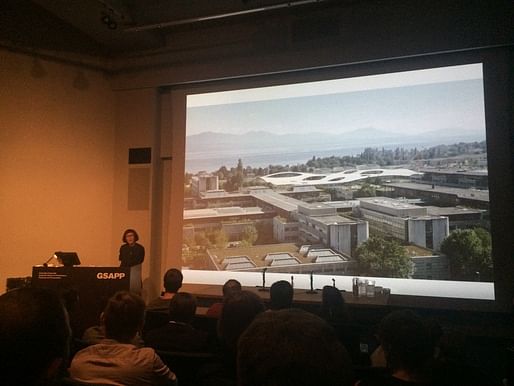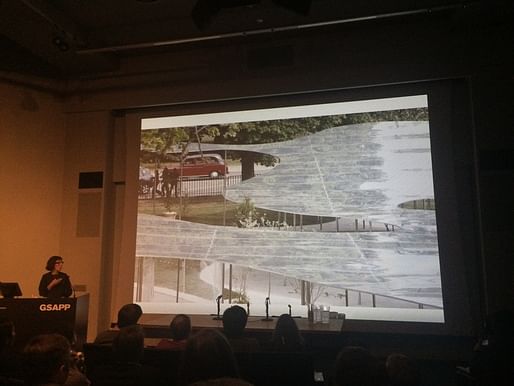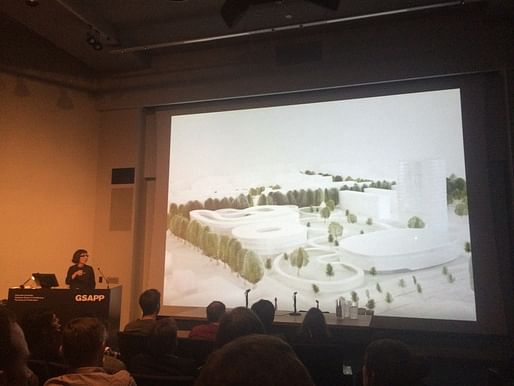
This past Wednesday, Kazuyo Sejima of SANAA addressed an overflowing Wood Auditorium, giving the first GSAPP lecture of the semester. Recently appointed dean Amale Andraos gave a brief introduction of Sejima and returned at the end of the lecture to lead a discussion as well as the Q/A portion of the evening.
Sejima began her lecture by explaining her choice of “Canopy” as her theme, an idea that is central to her, both as a part of SANAA and independently. “I like to make a space like a park, because a park is a place where different kind of people can gather,” stated Sejima, describing her desire to create an architecture that allows diverse groups of people to come together to both share and create their own space. By developing the concept of a canopy, Sejima creates a direct connection with the building and the environment, in a similar way that parks connect people with each other and the environment.

Starting with the Rolex Learning Center in Lausanne, Switzerland and concluding with the Grace Farms River project in New Canaan, Connecticut, Sejima systematically presented her work from the last five years.
Some projects, like the 2009 Serpentine Pavilion and Nishiniyoma House in Kyoto, Japan, are clear representations of Sejima’s ideas of using canopies and roof systems to blend architecture and nature, while also creating interesting relationships between the people occupying the space. While varied in scale, the two projects exemplify what Sejima’s notion of canopy, they become spaces where different people can share space – in the Serpentine Pavilion, becoming a space to gather, and in Nishiniyoma House, connecting different domestic spaces with a roof system that increases one’s awareness of neighbors without diminishing levels of privacy.


The lecture illuminated the varied scope and scale in which Sejima has worked, creating the signature weightless and delicate aesthetic, in both representation and built work. The array of institutional projects (Louvre Lens), many in academic settings (Bezalel Academy of Art and Design, Bocconi University Campus) was presented alongside small domestic, and collaborative projects (Home for All) as well as unique urban conversions (Inujima Island Galleries). Sejima concluded with the Grace Farms River project, a sinuous canopy set in rolling hills in Connecticut with a smattering of enclosed glass volumes.

Throughout each project, whether formally a canopy or not, Sejima clearly showed the influence of nature in her work, often referencing landscapes, views, and the importance of lighting.
The discussion and Q/A session following the lecture started with a few questions from Amale Andraos. Quickly touching on topics like sustainability, the obsession with lightness and dematerialization and context, Sejima reiterated her desire to make connections, for example using lightness in her buildings to create an infrastructure, “a kind of nature, garden or park.”
No Comments
Block this user
Are you sure you want to block this user and hide all related comments throughout the site?
Archinect
This is your first comment on Archinect. Your comment will be visible once approved.